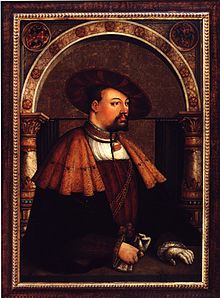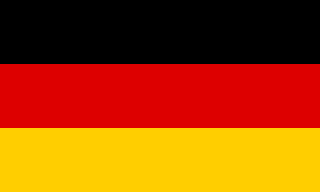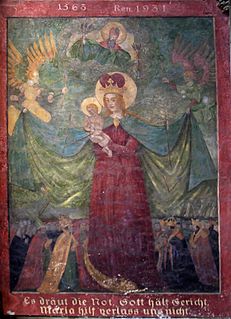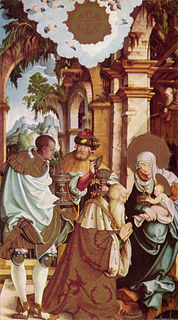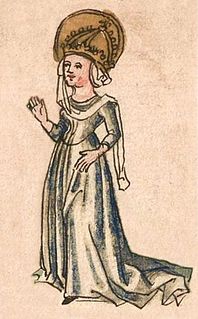
Hildegard, was the second wife of Charlemagne and mother of Louis the Pious. Little is known about her life, because, like all women of Charlemagne, she became important only from a political background, recording her parentage, wedding, death, and her role as a mother.
Hans von Zwiedineck-Südenhorst was a German historian.

Johannes Fried is a German historian and mediaevalist.
Deizisau is a town in the district of Esslingen in Baden-Württemberg in southern Germany. It belongs to the Stuttgart Region (until 1992 Region Mittlerer Neckar) and the Stuttgart Metropolitan Region. Deizisau is located between the towns of Plochingen and Esslingen am Neckar, about 20 kilometers southeast of Stuttgart, the capital of Baden-Württemberg. The river Neckar flows through this town.
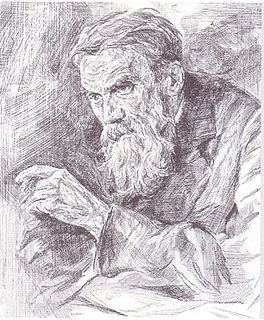
Adalbert Bezzenberger was a German philologist. He was born at Kassel and died at Königsberg. He is considered to be the founder of Baltic philology.
Otto Pächt was an Austrian art historian.

Markus Fuggervon der Lilie was a German politician and businessman of the Fugger family. He was the eldest son of Anton Fugger. He achieved several high offices - chamberlain to Archduke Ernest of Austria, Kammerpräsident, member of the kurbayrische (Bavarian) council, Pfleger (reeve) in the Landshut, and city-pfleger in Augsburg.
Hans Bobek was an Austrian geographer. After his studies in geography at the University of Innsbruck, where Johann Sölch—a pupil of Albrecht Penck in Vienna—was his main teacher, he became professor of geography at the University of Vienna (1951–1971). Bobek is noted for his works on cultural and social geography, urban geography as well as on the regional geography of the Near and Middle East, then primarily known as the "Orient". He was, among others, the author of Iran: Probleme eines unterentwickelten Landes alter Kultur. His theory about rural and urban interactions was called Rentenkapitalismus; another important output was the theory of cultural steps (Kulturstufentheorie).
Michael Matheus is a German historian.
Hans Jantzen was a German art historian who specialized in Medieval art.
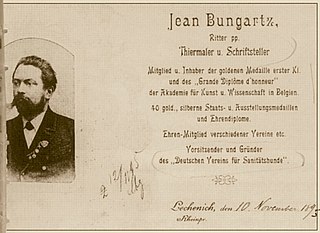
Jean Bungartz was a German animal painter, photographer, author and book illustrator.

The Lower Germanic Limes is the former frontier between the Roman province of Germania inferior and Germania Magna. The Lower Germanic Limes separated that part of the Rhineland left of the Rhine as well as the Netherlands, which was part of the Roman Empire, from the less tightly controlled regions east of the Rhine.

The Neckar-Odenwald Limes is a collective term for two, very different early sections of the Upper Germanic-Rhaetian Limes, a Roman defensive frontier line that may have been utilised during slightly different periods in history. The Neckar-Odenwald Limes consists of the northern Odenwald Limes (Odenwaldlimes), a cross-country limes with camps, watchtowers and palisades, which linked the River Main with the Neckar, and the adjoining southern Neckar Limes (Neckarlimes), which in earlier research was seen as a typical 'riverine limes', whereby the river replaced the function of the palisade as an approach obstacle. More recent research has thrown a different light on this way of viewing things that means may have to be relativized in future. The resulting research is ongoing.
The Alb Limes is a Roman frontier fortification or limes of the late 1st century AD in the Swabian Jura, also known as the Swabian Alb. The Alb Limes runs for just under 135 kilometres from Rottweil in the southwest to Heidenheim an der Brenz in the northeast.

The Master of the Karlsruhe Passion is the notname of a German painter of the late Gothic period active in the Upper Rhine. Very influential on other painters in the region, he may be identified with the Strasbourg painter Hans Hirtz. He is named after his main work, the Karlsruhe Passion, though he may also have been the artist behind the murals in the former Dominican church in Strasbourg, only known through two 17th century copies.
Wolfgang Kermer is a German art historian, artist, art pedagogue, author, editor and professor. From 1971 to 1984 he was Rector of the State Academy of Fine Arts Stuttgart. His focus is the history of Visual arts education and the art of Willi Baumeister.
